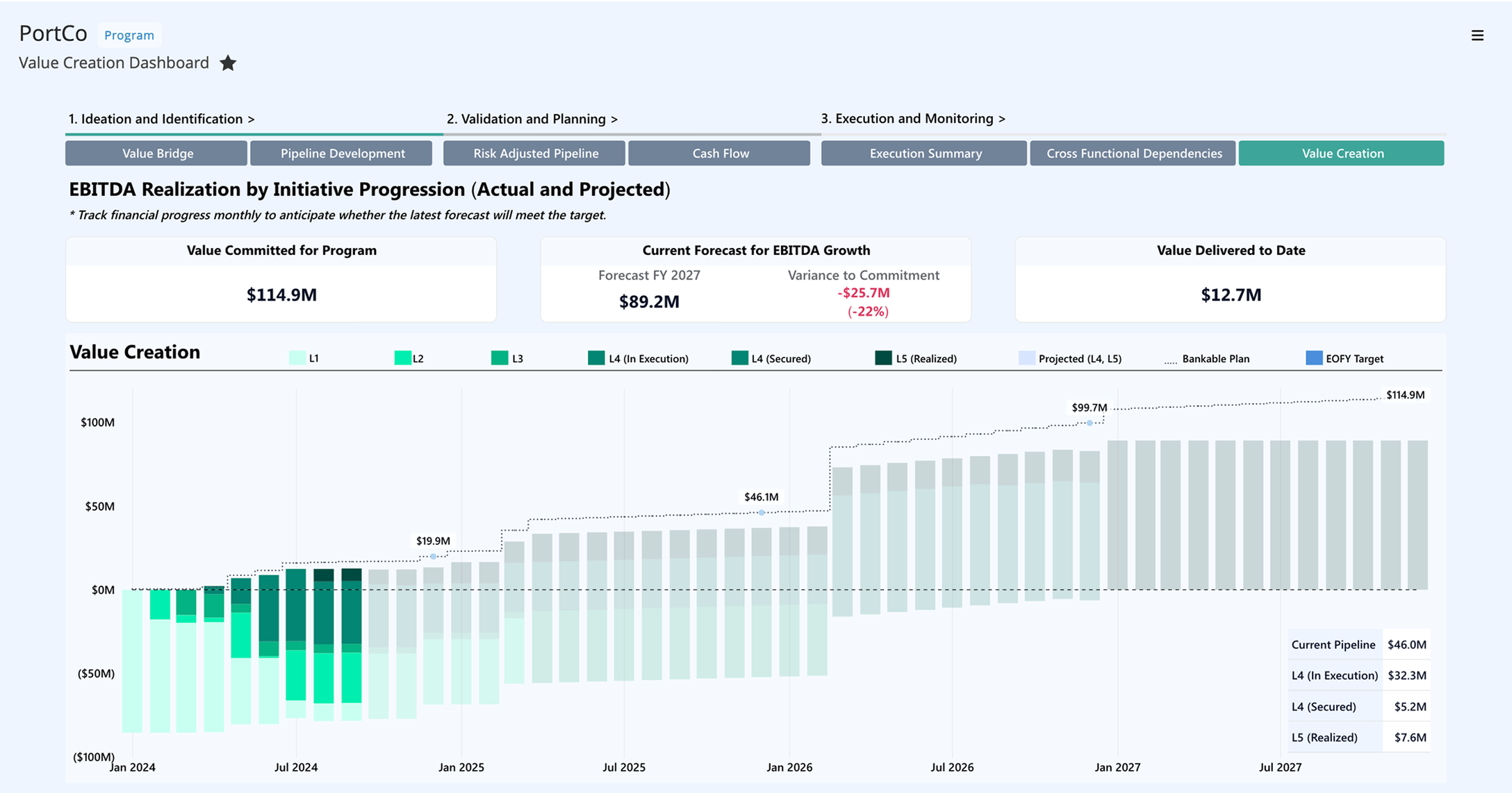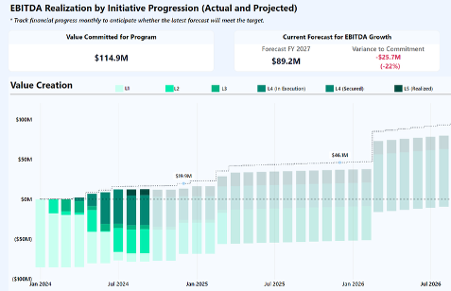The CFO’s Guide to Strategy Execution: Turning Ambition into Enterprise-Wide Outcomes
Introduction
Strategic ambition means little without execution. In today’s environment, defined by margin pressure, digital acceleration, and investor scrutiny, CFOs are being asked to do more than create enterprise value. They must lead its creation.
In this guide, you are going to get actionable insights into how CFOs can take a leadership role in strategy execution - moving beyond oversight to directly shaping how value is defined, delivered, and measured across the enterprise. You will see what leading CFOs are doing differently and how to translate those principles into practice inside your own organization.
Recent McKinsey research found that transformations where CFOs play an active leadership role are more than twice as likely to meet or exceed their financial targets (source: McKinsey, Four Dos and Don’ts for CFOs Leading Transformations). That data point captures a global shift: finance leaders are moving from being scorekeepers to orchestrators of strategy execution.
For organizations navigating complex transformations, the CFO’s role has never been more pivotal - or more full of potential.
Why CFOs Are Central to Closing the Strategy-Execution Gap
CFOs sit at the intersection of strategy, operations, and capital allocation. That position gives them the unique ability to connect ambition with action, aligning what the business aims to achieve with how it actually delivers value.
When CFOs step into this role:
1. Strategy becomes operationalized. They translate big goals into measurable financial and non-financial outcomes that guide decision-making.
2. Investment becomes intentional. They allocate capital toward initiatives with the clearest line of sight to impact, ensuring resources flow where value is created.
3. Performance becomes transparent. They establish the systems and rhythms that let every leader see how their work contributes to enterprise results.
In doing so, CFOs transform from observers of progress to architects of performance. Their perspective enables execution that is not just financially sound but strategically coherent across the enterprise.
By combining financial discipline with modern execution visibility, CFOs can ensure every initiative ties back to enterprise outcomes - and every dollar spent delivers measurable value.
Four Ways CFOs Can Strengthen Strategy Execution
1. Lead with Value Discipline
Every transformation begins with a promise of value. Yet without a clear financial baseline, it is impossible to tell whether value has truly been created or simply shifted.
CFOs can bring discipline by:
- Establishing a credible baseline that separates business-as-usual performance from transformation impact.
- Translating strategy into measurable value drivers that align budgets, KPIs, and forecasts.
- Requiring consistent benefits realization tracking to ensure projected value does not erode in delivery.
McKinsey estimates that around 70% of transformations fail to deliver their intended results, often because benefits are assumed, not tracked (source: McKinsey, Why CFOs Need a Bigger Role inBusiness Transformations).
By embedding value governance from the start,CFOs anchor execution in credibility and fact, not optimism.
2. Build a Cross-Functional Execution Engine
CFOs cannot drive transformation alone. Success depends on creating a connected execution engine that links finance, transformation, and operations around shared metrics.
This means:
- Forming a governance layer with regular escalations and a cross-functional board that reviews progress and removes obstacles.
- Replacing static spreadsheets and quarterly reviews with live dashboards that unify execution, benefits, and spend.
- Creating transparency across all initiative owners so everyone understands how their work contributes to enterprise results.
When execution is connected, accountability becomes collective, decision-making becomes faster, and course correction happens before value erodes.
3. Drive Change Through Clarity and Cadence
Transformation fails without behavioral change, and that starts with communication. CFOs who lead with clarity and cadence can shift how teams think about value.
Practical moves include:
- Framing the “why” of transformation beyond financial targets by linking outcomes to growth, innovation, and resilience.
- Embedding regular value reviews that focus on realized benefits, not just cost variance.
- Demonstrating visible leadership by being decisive in trade-offs, transparent in priorities, and candid in progress updates.
As McKinsey observed, CFOs who set a clear rhythm of accountability tend to sustain transformation momentum far longer than those who delegate it entirely.
4. Equip the Enterprise with the Right Systems
Even the best frameworks fail without data integrity. The modern CFO’s role includes championing technology that connects strategy, finance, and execution.
Core principles:
- Use connected execution platforms to link initiatives, budgets, and outcomes in one environment.
- Provide real-time visibility into spend, progress, and benefit delivery to enable early course corrections.
- Standardize data and definitions to ensure consistent reporting across business units or portfolios.
- Keep agility: centralize insight, not bureaucracy.
By unifying data flows, CFOs can turn reporting from a backward-looking exercise into a forward-looking capabilitythat continuously guides decision-making.
Avoiding the Common Traps
Even experienced finance leaders can fall into familiar pitfalls:
- Over-delegating execution. CFOs who remain too distant lose sight of value leakage and risk delays in benefit capture.
- Over-focusing on cost. Transformation success demands investment and iteration. Balance discipline with innovation.
- Under-communicating progress. Financial fluency does not equal understanding. Turn metrics into narratives that resonate with non-finance audiences.
Execution is as much a storytelling challenge as it is a governance one.
A Practical CFO Playbook for Action
< Return to Amplify Insights



